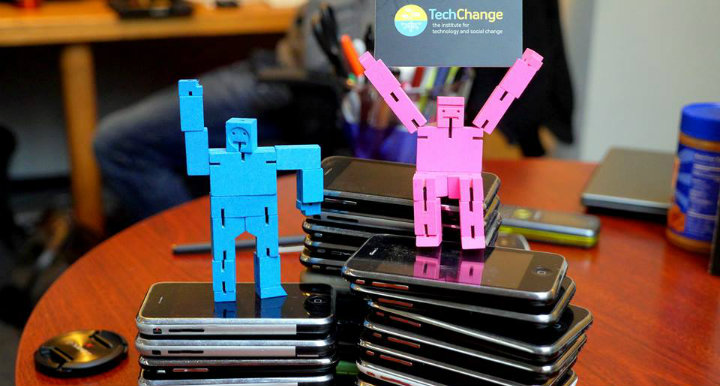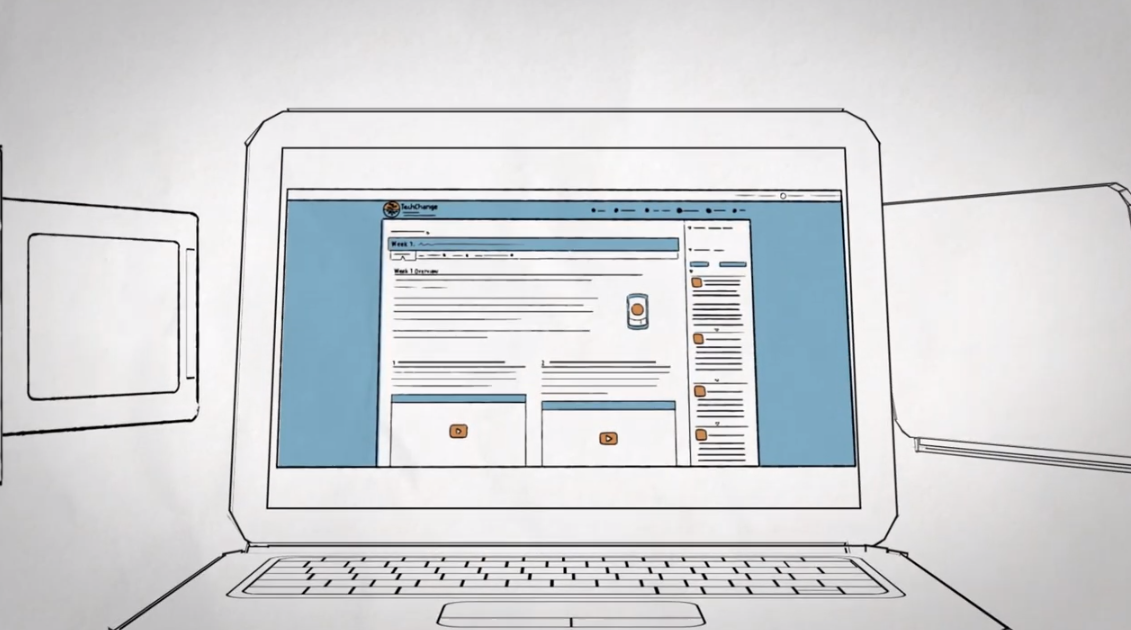Earlier this month I sat down with Dr. Craig Zelizer, Associate Director of the Conflict Resolution MA Program at Georgetown University and TechChange Advisor, to talk about the online professional network that he created in 2008 called the Peace and Collaborative Development Network (PCDN). PCDN has grown to over 16,000 members, 250,000 hits a month and is one of the most well respected and utilized sites in the field of peace and conflict studies. The aim of the site is “to foster dialogue and sharing of resources in international development, conflict resolution, gender mainstreaming, human rights, social entrepreneurship and related fields.” I was eager to learn about the network’s origins, successes, challenges and future plans. Highlights from our conversation are featured below.
 Nick: What inspired you to start Peace and Collaborative Network?
Nick: What inspired you to start Peace and Collaborative Network?
Craig: I’ve always been a networker and been interested in finding innovative ways to connect people and democratize access to information. When I was an undergrad I started an informal newsletter to inform people about social change activities on campus at the University of Massachusetts at Amherst. After the Cold War ended, I had the opportunity to study and work in Eastern Europe. While there, I found that information was generally kept in close circles and not shared widely. So I started an informal listserve through Yahoo Groups to distribute information about professional opportunities and events related to the field of peace and conflict. This list grew over time, to about 15,000 people. I was also part of an effort to start a fee-for-service job site with the Alliance for Conflict Transformation. We made enough money to support the project but encountered a number of frustrations with the design and web development process. So with PCDN, I wasn’t starting from scratch, I had been engaged in similar efforts for ten years or so and had a base of several thousand users. It did however take many years to find the right technology. PCDN runs using the Ning Platform. What Ning does is what I had always been seeking in a web-based social networking platform. There are some problems with platform but the company is committed to innovation, democratizing information, and is very responsive to feedback from users. And I don’t need to be a programmer to manage and maintain it.
What are the aspects of the site that have been the most successful?
There are hundreds of social networking sites that have a lot of value—my vision was to try to fill a gap in the field and create horizontal networking and information sharing. When I first set out, I knew that to attract people to the site, there had to be a base of information so I invested significant time in creating core content. This helped to build a following. The social networking component is essential but people often come to the site for the other features like scholarship, fellowship and grant information, resource guides, conference and training announcements, and many other opportunities.
I think one of the most successful aspects of the site is its horizontalness—there is no hierarchy. It’s moderated to some degree but anyone can post. From graduate students to experts with 30 years experience, people of all different skill levels participate.
What are the greatest challenges, both those you have overcome or those that you still face in administering PCDN?
One basic question I struggle with is should the site be open or not? It used to be open but there were a number of spammers who joined and posted inappropriate content. As a consequence, the site is still public (meaning everyone can see the postings) but users can only post if they are registered. If someone doesn’t provide adequate information in their profile when registering they are not accepted in the network.
Deciding what content to moderate and how to moderate it is also a challenge given that my time is limited. For instance, early on I decided that fundraising requests are not permitted as the site would be deluged. Additionally, there have been arguments in some the network subgroups that have been a challenge. I don’t have time to moderate these forums and have encountered situations where users have held me responsible as the site administrator for other users’ comments. I do have a few people helping me with the site, but it’s at the point where I need to develop a core group of people who are committed to administration and promotion of the network so that it doesn’t take too much time for me since I do this as a volunteer.
 Another significant challenge is trying to measure the impact of the network. There is a space on the site where over 300 members have posted clear feedback about the direct benefits they have received from their membership. But it is challenging to be able to develop indicators, and even more so the time to find an accurate measure. I do have a strong interest in exploring this question on a larger level, regarding how can the field more effectively measure the positive impact (and challenges) of sites that promote social networking and dialogue.
Another significant challenge is trying to measure the impact of the network. There is a space on the site where over 300 members have posted clear feedback about the direct benefits they have received from their membership. But it is challenging to be able to develop indicators, and even more so the time to find an accurate measure. I do have a strong interest in exploring this question on a larger level, regarding how can the field more effectively measure the positive impact (and challenges) of sites that promote social networking and dialogue.
I think a final challenge is achieving the right balance for disseminating information. Some users have said that the email alerts are too frequent while others have said that they would like more.
What are some of your future goals with the site?
I’d like PCDN to be one the premier social networking sites for sharing information in the field of peace and conflict studies. I’d like to grow the network to 50,000 to 100,000 members. The membership has been doubling every year. Businesswise, it’s a social venture and right now it makes very little money (from the ads), not nearly enough to support my time in administration. If it ever got the point where the site was generating more revenue than it took to run, then half would go towards supporting the administration and half would be used to fund projects in the field of peace and conflict studies.


